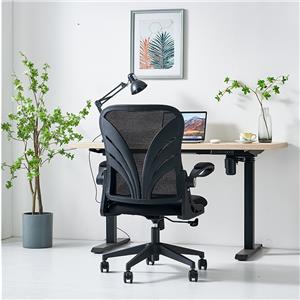Sit and watch the clouds roll and relax: eight famous chairs in Chinese furniture
Chair is a general term for seats with backrests. Their styles and sizes vary greatly. Except for "thrones", all can be classified into this category.
Chairs in ancient China mainly appeared after the Tang Dynasty, and the chairs were also separated from the name of the bed, and were later called chairs. The main types include: high chair, Taishi chair, official hat chair (four-year-old official hat chair, southern official hat chair), arm chair, rose chair, lamp hanging chair, Zen chair, palace chair, etc.
1. Top position
Jiaozhi is a very ancient chair. Because the legs of the chair are cross-shaped, it is named "Jiaozhi". It is a foldable Jiaozhi chair.
Jiaozhi was born in the Tang Dynasty and became popular in the Song Dynasty.
It can be divided into two types: straight back and round back. The intersection parts are usually wrapped with metal decorations. Most chairs in the Ming Dynasty had round backs.
The chair can be folded for easy portability, and its seat surface is available in leather or rope.
It is reported that when the emperor went hunting, the chair his attendants carried for him was the chair. When the emperor was tired, he ordered his attendants to open the chair and sit on it to rest.
Over time, the throne became a symbol of power.
When Chinese people describe a person's status, they often talk about which chair they sit in. "Sitting in the first chair" represents the supreme status. For example, in the historical masterpiece "Water Margin", Song Jiang takes the first place.
2. Taishi chair
The Taishi chair was produced in the Song Dynasty and is the only chair named after an official position. In the past, we often said "sit firmly on the Taishi chair", referring to this kind of chair.
There are some legends about the birth of the Taishi Chair. According to legend, there are two theories.
The first theory: According to the "Gui'er Collection" written by Zhang Ruiyi of the Song Dynasty, the person who served as the grand master at that time was none other than Qin Hui, the traitorous official who later killed Yue Fei.
Once, he accidentally dropped his turban while sitting on an armchair to rest. Upon seeing this, the "sycophants" around him ordered craftsmen to make a lotus leaf headrest and place it on the chair ring. Qin Hui was very happy, and the "Grand Master's Chair" got its name from this.
The second theory: the Taishi chair evolved from the "Wen Taishi chair".
"Wen Taishi" refers to Wen Zhengming, a talented man in the modern era, and "Wen Taishi Chair" is the chair he used daily. After his death, the chair was owned by Wen Zhenmeng, Wen Zhengming's great-grandson. Wen Zhen joined the cabinet as prime minister in the late Meng Ming Dynasty and was the Grand Master of the Chongzhen Dynasty. Because "Taishi" and "Taishi" have the same pronunciation, and Wen Zhenmeng also lived as an official in Taishi, this kind of chair was called "Taishi chair".
3. Official hat chair
The official hat chair is so named because the shape of the chair resembles the official hat of ancient officials. This type of chair began in the Song, Yuan and Ming dynasties.
There are two types of official hat chairs: "four early" official hat chairs and southern official hat chairs:
The four-head official hat chair: also known as the Beiguan hat chair, is a chair with the head and armrests sticking out. This style of head and head is named after imitating the shape of the hat wings worn in the Song Dynasty, so it is called " Official hat chair". It is now called the "four-year-old official hat chair".
Nanguan hat chair: The Nanguan hat chair has a headrest and armrests that don’t stand out.
Except for the headrest and armrests, it is the same as the four-headed official hat chair. The Nanguan hat chair was born in the Ming Dynasty. It is a furniture chair based on the style of the Ming Dynasty official hat.
4. Armchair
Among the bright pearls of Chinese classical furniture, the most dazzling is undoubtedly Ming-style furniture. The most dazzling Ming-style furniture is the armchair.
It originated in the Tang Dynasty, took shape in the Song Dynasty, and reached its peak in the Ming Dynasty.
Known as the most classic Ming-style furniture, countless Chinese and foreign furniture designers want to challenge it, but no one has surpassed it so far!
The most obvious feature is that the back of the circle is connected to the armrests, which flow down from high to low. When sitting, people's arms can lean on the circle-shaped armrests, which makes them feel very comfortable and very popular among people.
There is no shortage of "praising words" for armchairs:
The materials are carefully selected, the shape is concise, the structure is reasonable, the workmanship is exquisite, simple and beautiful, generous, elegant and beautiful, and the meaning is extraordinary.
It is more philosophical: the great truth is simple, great wisdom is like foolishness, tolerance is great, goodness is like water, virtue is great, heaven rewards hard work, and a win-win spirit.
However, the beauty of the armchair cannot be fully described in words, or it can only be described in one word: although it is made by man, it seems to have been opened by heaven.
It's easy to make an armchair, but it's extremely difficult to make a real charm. Many armchairs with only a certain shape have almost the same thickness as the chair rings. In fact, as the curvature changes, the size of the chair ring is constantly changing, and the angle of the changing parts is also constantly changing.
Whether the armchair can be made round and graceful, plump and vigorous is also an important criterion for experts to test the level of experience of a carpenter.
5. Rose Chair
The rose chair, also known as the "lady's chair", was the royal seat in ancient ladies' boudoirs.
When an ancient woman sat on such a chair, she had to sit with an upright posture, a straight back, and sit on one-third of the chair surface to reflect the upbringing of a lady.
The rose chair has been seen in famous paintings of the Song Dynasty, and was more common in the Ming Dynasty. It is a chair with a unique shape. The basic shape of the rose chair is: the back of the chair is low, and the height of the back is almost the same as the height of the armrests.
The armrests, backrests and legs are mostly round and stick-shaped. The backrest has no side legs and stands upright on the seat surface. The part above the seat of the rose chair is unique and famous for its beauty.
The backrests are mostly decorated, either with coupons or carved panels. Above the seat surface, there are mostly horizontal bars, with either short old supports or card flower supports in the middle to break the dull feeling of the low backrest. Rose chairs of the Ming Dynasty mostly had round legs. Rose chairs with square legs and round edges are mostly works from the Qing Dynasty.
6. Lamp hanging chair
The lamp hanging chair is named after its shape, which is similar to the bamboo hanging lamp hanging on the stove wall in the south to support the oil lamp. The lamp hanging chair was the most popular chair style in the Ming Dynasty. It can also be said to be the popular style since the Five Dynasties and Song Dynasty.
Let's look at the hanging lamp chairs in "Han Xizai's Night Banquet", the hanging lamp chairs where Zhao Dawen and his wife sat in the Song Dynasty tomb in Baisha, and the hanging lamp chairs unearthed in Julu, Hebei. Their shapes are similar.
The wood of lamp hanging chairs is mostly made of wood and elm among the people, while huanghuali, rosewood, chicken wing wood, etc. are mostly used for high-end furniture.
7. Zen
Ancient Zen masters generally had a specific chair for meditation, called a "Zen chair."
Zen chairs originate from Zen culture. Its profound Zen culture is originally a product of monastic life. It is a specific seat for Zen masters to meditate on special occasions such as temples and Buddhist halls.
The size and structure of the Zen chair are different from ordinary chairs. It is suitable for Zen masters to sit cross-legged and allows the Zen master to straighten his waist and sit in a standard meditation posture.
The simple and extremely simple frame of the Zen chair's back and armrests creates a relatively independent self-space for meditators, making it easy to create a meditative atmosphere.
And its seating surface is wide enough so that meditators don’t have to touch the armrests and back of the chair and rely on them.
In fact, the armrests and back frame of the Zen chair do not provide a leaning function, and even if you lean on it, you will not feel comfortable. However, the existence of these three sides has the effect of relatively separating the meditator from the external environment. When meditators sit on it, they can suddenly feel a state of independence from the world, calm and calm, and think calmly.
8. Palace chair
The "palace chair" was produced in the imperial palace of the Qing Dynasty, and was mainly carved with dragons and phoenixes, and was a symbol of social hierarchy. With the elimination of the feudal system and the development of society, today's palace chairs have entered the homes of ordinary people, and bold innovation and development have also been carried out in craftsmanship.
Today's palace chairs are not only carved with dragons and phoenixes, but also with flowers, birds, figures, landscapes and other themes. It has also developed from a fixed two pieces to more than a dozen specifications such as six-piece sets and ten-piece sets. The materials used include huanghuali, rosewood, rosewood, nanmu and other materials.




